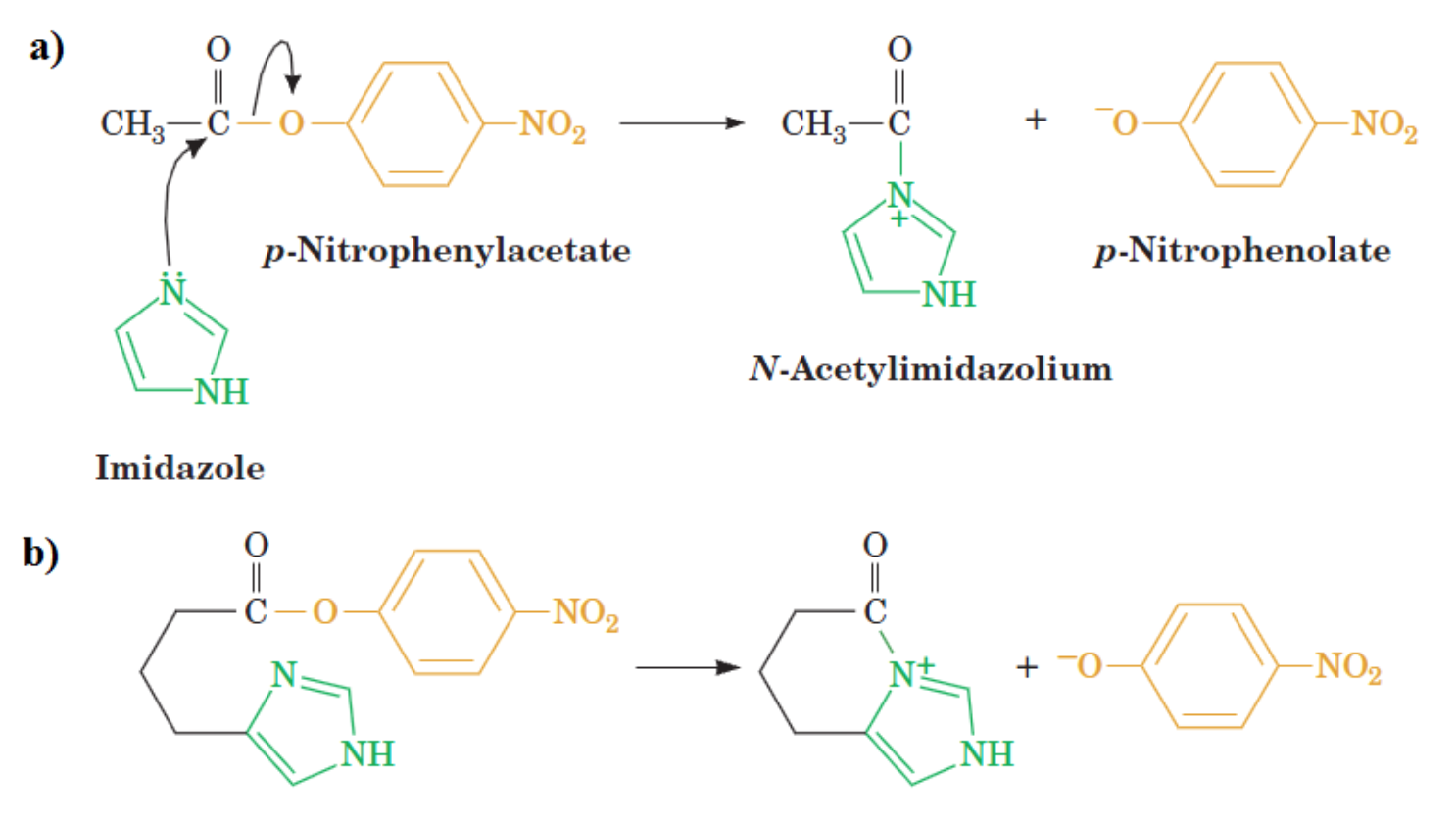【6.5.5】临近和定向催化(Catalysis by proximity and orientation)
临近与定向效应是酶把底物分子(一种或两种)从溶液中富集出来,使它们固定在活性中心附近,反应基团相互邻近,同时使反应基团的分子轨道以正确方位相互交叠,彼此靠近并有一定的取向。这样就大大提高了活性部位上底物的有效浓度,使分子间的反应变成了一个近似于分子内的反应,从而大大增加了中间产物ES形成过渡态的几率。
邻近定向效应是指两种或两种以上的底物同时结合在酶活性中心上,相互靠近 (邻近) ,并采取正确的空间取向(定向) ,这样大大提高了底物的有效浓度, 使分子间反应近似分子内反应从而加快了反应速度。 尽管底物与酶的结合使底物 的熵减少,但熵的损失通过底物与酶结合释放的结合能而得以弥补(This increases the rate of the reaction as enzyme-substrate interactions align reactive chemical groups and hold them in close proximity together. This effect is analogous to an effective increase in concentration of the reagents. The binding of the reagents to the enzyme gives the reaction intramolecular character, which gives a massive rate increase. This reduces the entropy of the reactants and thus makes reactions such as ligations or addition reactions more favorable, there is a reduction in the overall loss of entropy when two reactants become a single product).
分子间和分子内的反应(Intramolecular and intermolecular reactions)

参考资料
- 南京大学 杨荣武老师 《结构生物学》课件
